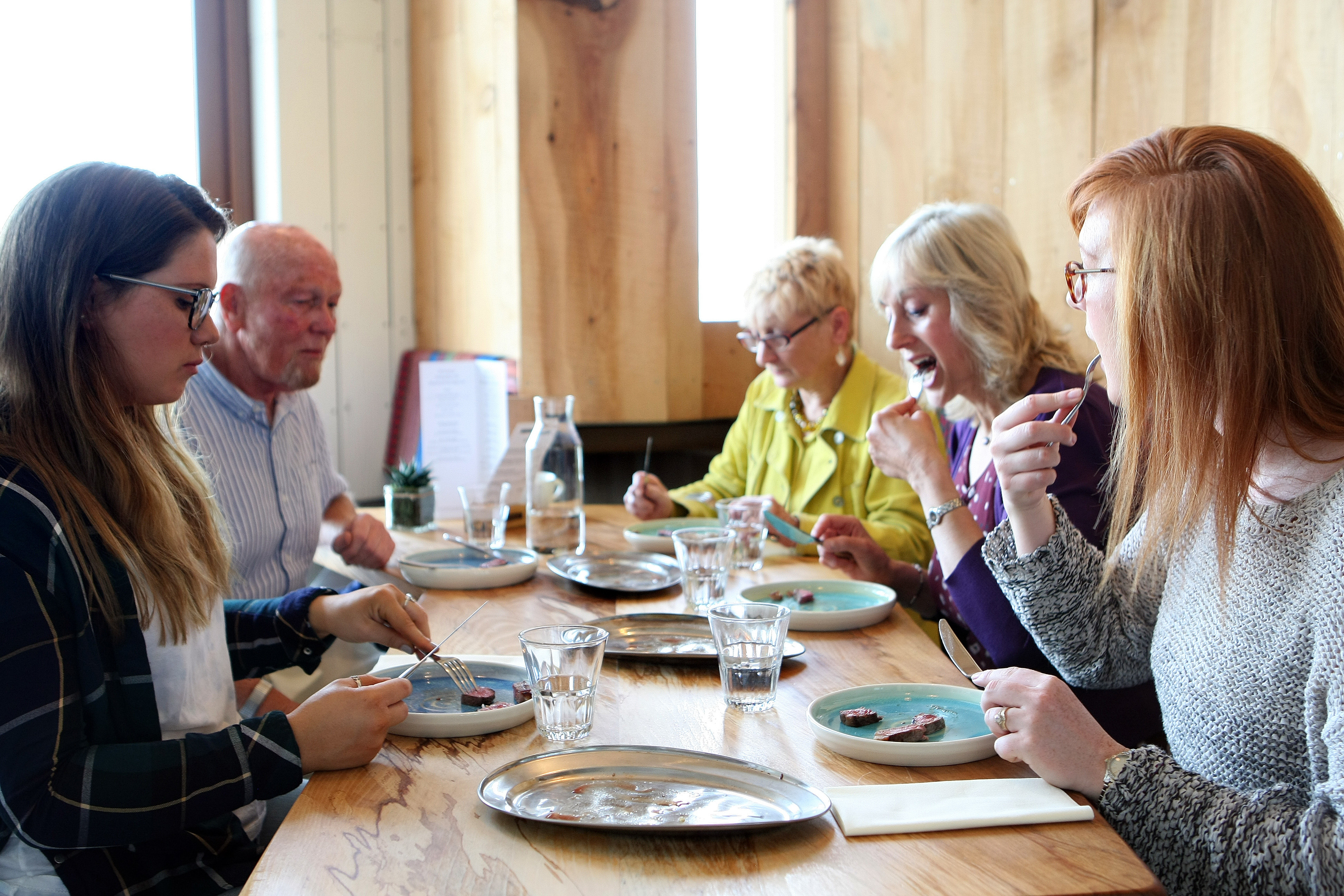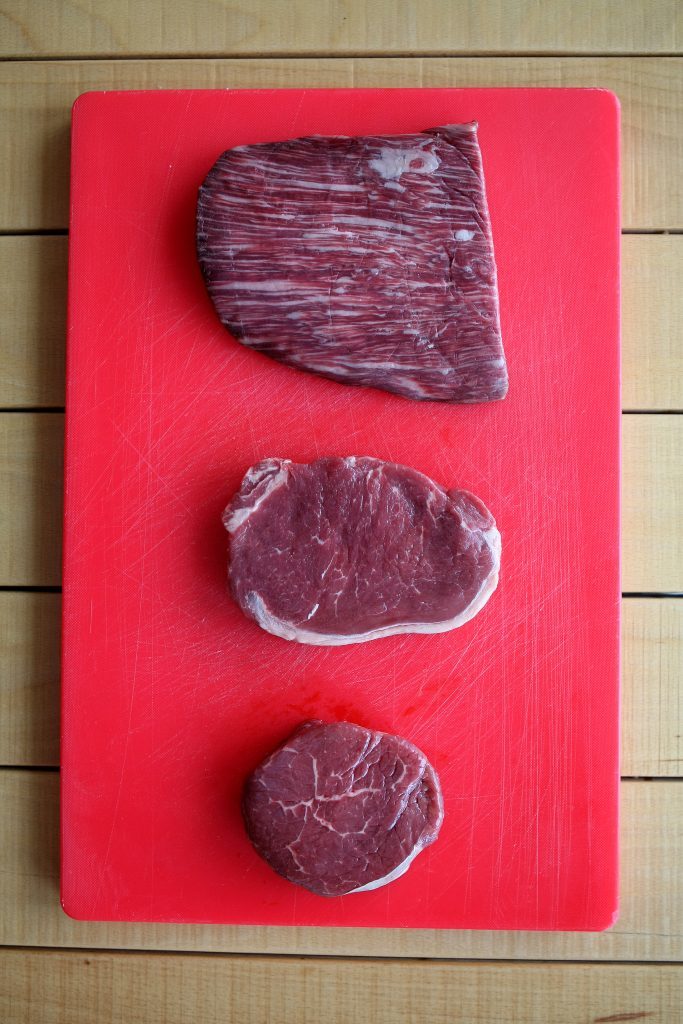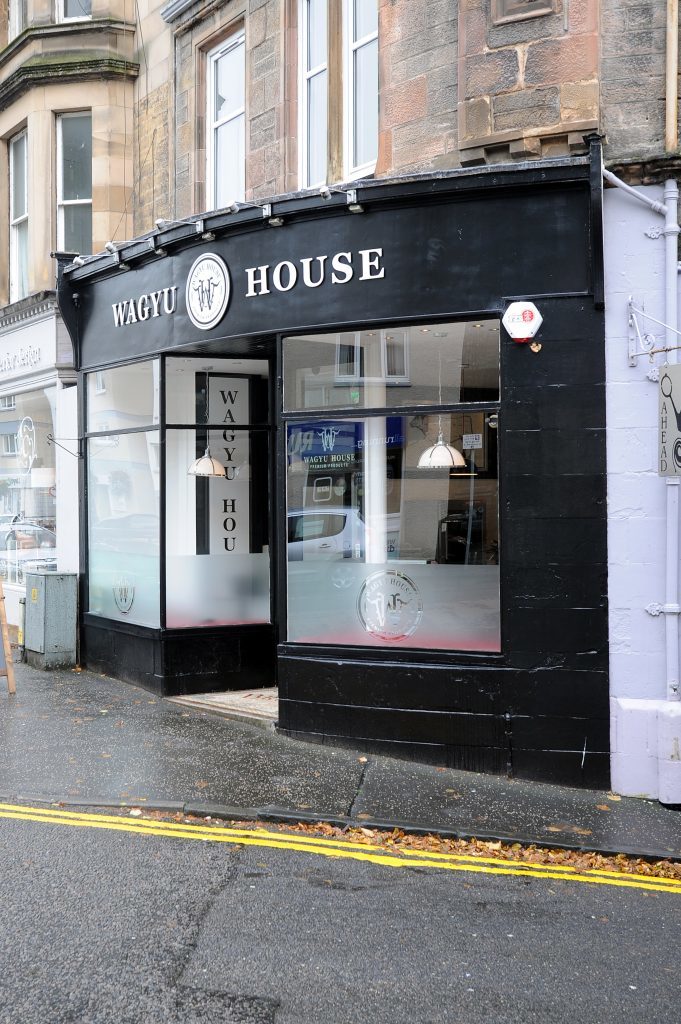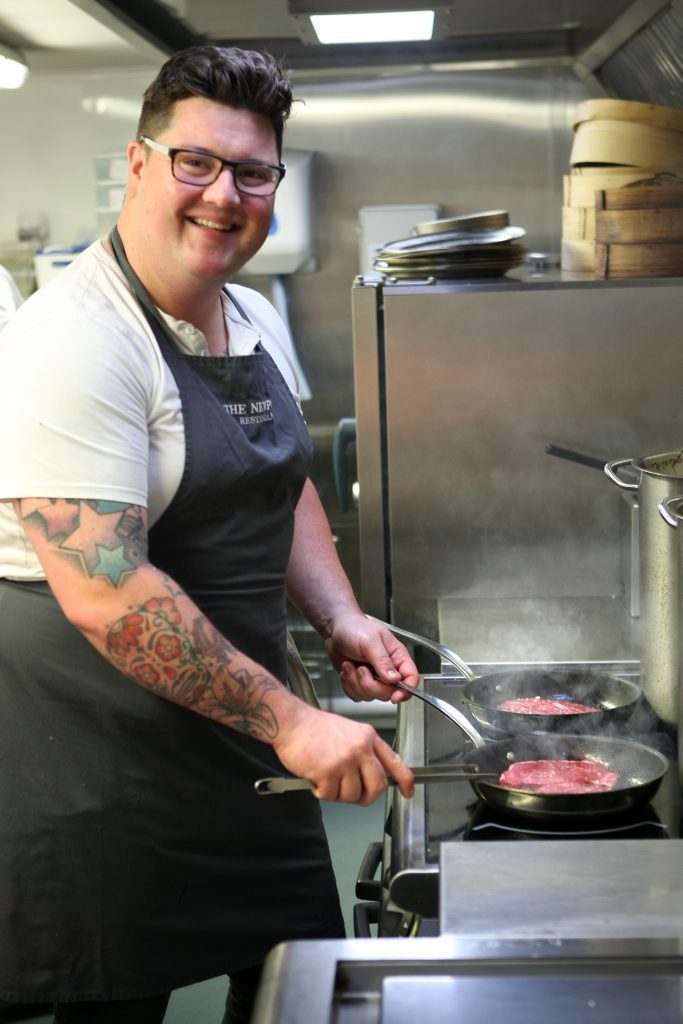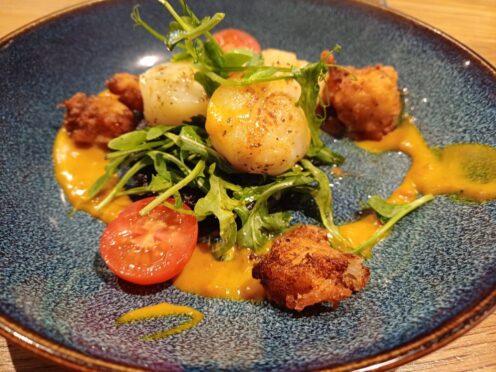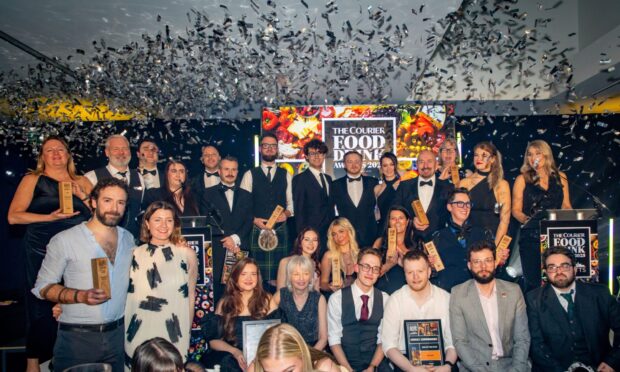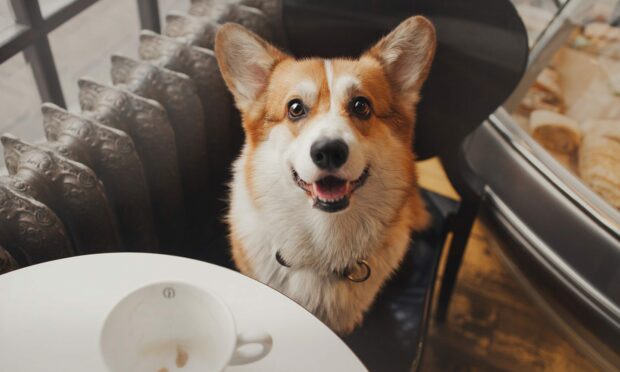It is considered to be the best meat in the world – but would Japanese wagyu beef pass a taste test in the land of the cow pie?
That’s the poser we set out to answer with the help of one of Courier Country’s leading chefs and a slab of steak from the only farm in Scotland selling the meat and breeding wagyu cross cattle.
Dunblane-based Highland Wagyu is stocking the delicacy in its new shop, Wagyu House at Bridge of Allan, where a kilo of meat can cost up to £1,000.
So what is it that makes it so special – and expensive?
The unique selling point of wagyu (literally “Japanese cow”) is its high degree of marbling – a mark of high quality, caused by a higher proportion of mostly mono-unsaturated fat. It is this, say aficionados,which gives the meat an extra depth of flavour compared to other kinds of beef.
In Japan a single kobe steak – beef from the Tajima strain of the cattle – costs 10,000 yen, or around £74.
Husband and wife team Mohsin Altajir and Martine Chapman of Highland Wagyu are now on a mission to make Scotland the centre of Europe for the product.
They don’t go as far as massaging their cattle and feeding them beer – a luxury enjoyed by herds in Japan to ensure they are always relaxed.
However, a combination of Perthshire grassland and specially created feed is designed to ensure the velvety, buttery texture of the uniquely marbled beef.
Not wishing to stretch The Courier’s budget too tightly, the lady in the shop recommended we try a piece of Wangus flank (wagyu crossed with Aberdeen Angus), priced £22.
We then bought a sirloin steak (£3.87) and a fillet steak (£5.60) from the supermarket and put all three to a taste test to see how they compared.
Jamie Scott, former MasterChef winner and chef patron of The Newport Restaurant in Newport-on-Tay, agreed to prepare the meat for my good self; his wife Kelly; Sophie Jarrett, a waitress at the Newport, and self-confessed foodies Maureen and Stewart McKiddie from Wormit.
All three were served medium rare, gently fried with a little butter and sea salt then placed on three different platters.
Steak one was tender and succulent, with a “traditional” flavour that had everyone licking their lips.
Moving on to the second dish, everyone commented on the melt-in-the-mouth texture of the beef, complemented by its crispy exterior and the distinctive, yet subtle, overall flavour.
The last platter offered a sliver of beef with a strong meaty taste.
Although all three were delicious, there was one standout for all five voluteers and we unanimously guessed platter number two was the Wangus, while number one was the sirloin and the third the fillet.
But were we right?
The verdict
Jamie confirmed our tastebuds were spot-on and said he wasn’t surprised the wagyu’s quality had shone through.
“The good fat in the Wangus imparts the softness and moistness to the meat, while the special diet the cattle are fed on (which apparently includes seaweed and oats) adds to its unique taste,” he commented.
“And it’s all the more impressive that the flank of Wangus won against a prime cut like fillet.”
clindsay@thecourier.co.uk
www.wagyu.co.uk
